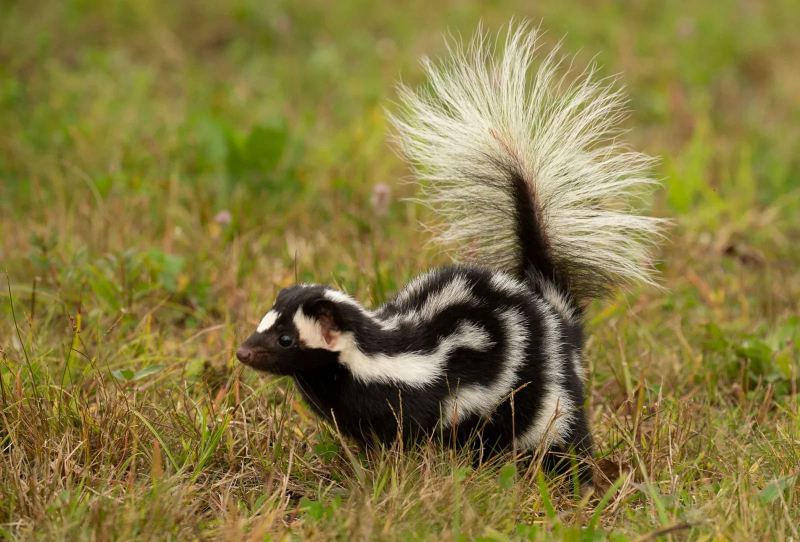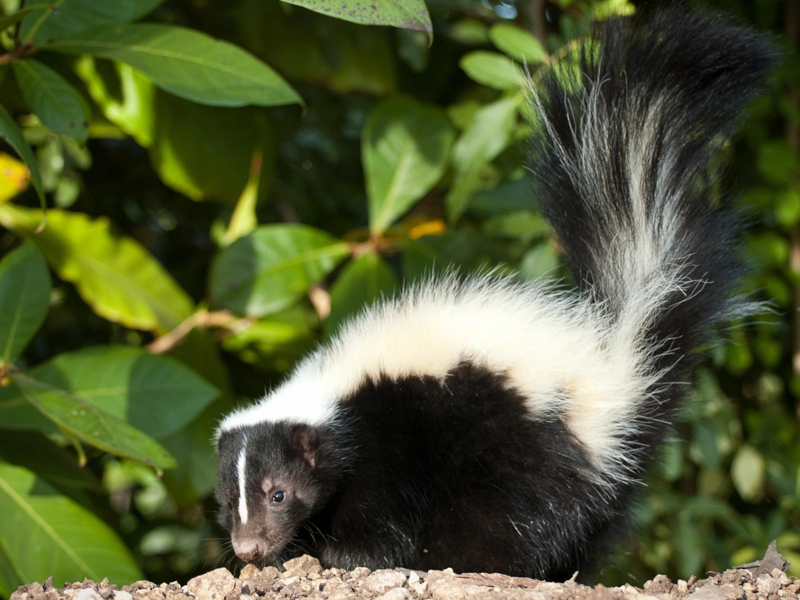Skunk
Skunks are mammals in the family Mephitidae. They are known for their ability to spray a liquid with a strong, unpleasant scent from their anal glands. While related to polecats and other members of the weasel family, skunks have as their closest relatives the old world stink badgers. They are omnivorous, eating both plant and animal material and changing their diets as the seasons change. They eat insects, larvae, earthworms, grubs, rodents, lizards, salamanders, frogs, snakes, birds, moles, and eggs. These animals also commonly eat berries, roots, leaves, grasses, fungi, and nuts.
Skunk species range in size from approximately 40 to 94 cm long and weigh between approximately 1.1 lb and 18 lb (8.2 kg), depending on the species (hog-nosed skunks). They have rather short, well-muscled legs, a body that is moderately elongated, and long front claws for digging. Each foot of theirs has five toes. They often have black and white fur, although some also have brown or grey and even cream-colored fur. Skunks have stripes from birth on. They could have two thin stripes, a single thick stripe over the back and tail, or a collection of white spots and frayed stripes (in the case of the spotted skunk).












